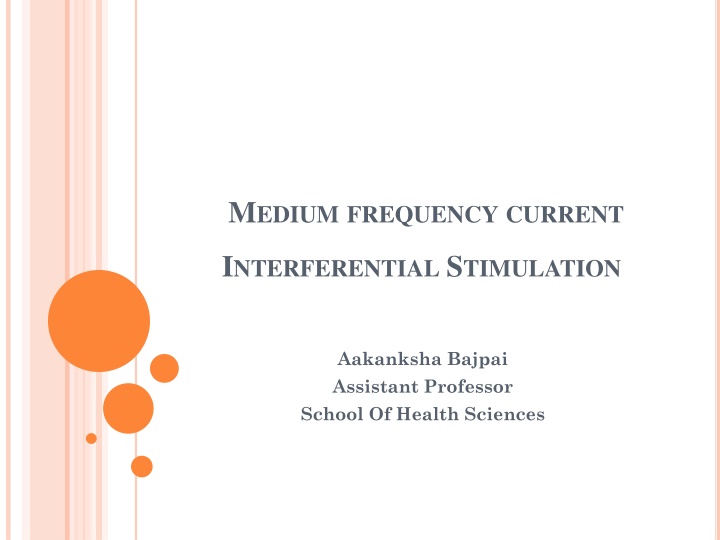Enhancing Rural EMS Capacity
Providing access to quality health care in rural communities through programs and activities aimed at improving EMS capacity, integrating services, and engaging with community partners. A focus on assessing, developing strategies, and promoting sustainability for rural ambulance agencies.
Download Presentation

Please find below an Image/Link to download the presentation.
The content on the website is provided AS IS for your information and personal use only. It may not be sold, licensed, or shared on other websites without obtaining consent from the author.If you encounter any issues during the download, it is possible that the publisher has removed the file from their server.
You are allowed to download the files provided on this website for personal or commercial use, subject to the condition that they are used lawfully. All files are the property of their respective owners.
The content on the website is provided AS IS for your information and personal use only. It may not be sold, licensed, or shared on other websites without obtaining consent from the author.
E N D
Presentation Transcript
MEDIUM FREQUENCY CURRENT INTERFERENTIAL STIMULATION Aakanksha Bajpai Assistant Professor School Of Health Sciences
Interferential stimulation (IFS) units generate two ACs on two separate channels. One channel produces a constant high-frequency sine wave (4000 to 5000 Hz), and the other channel produces a sine wave with a variable frequency.
The medium frequency carrier currents penetrate the tissues with very little resistance. The resulting interference currents are in a range that allows effective stimulation of deeper tissues than other forms of electrical stimulation with relatively little patient discomfort.
ELECTRODE PLACEMENT When an alternating current is used the electrodes should be no more than 5.9 inches (15 cm) apart. QuadripolarTechnique The four electrodes are positioned around the painful area so that each channel runs perpendicular to the other and the current crosses at the midpoint . The interference effects branch off at 45-degree angles from the center of the treatment, in the shape of a four-leaf clover.
Tissues within this area receive the maximal treatment effect; however, the distribution of the current is inconsistent, potentially leading to discomfort and decreased treatment effectiveness. When the electrodes are properly positioned, the stimulation should be felt only between the electrodes, not under the electrodes.
INSTRUMENTATION Power: When the switch is in its ON position, the current is allowed to flow to the internal components of the generator. Reset: This safety feature ensures that the intensity is reduced to zero before the treatment is started. Timer: This control sets the duration of the treatment and subsequently displays the remaining time. On some units, the TIMER serves as the master power switch.
Start-stop: This switch is used to initiate and terminate the treatment. Intensity: This control adjusts the amplitude of the pulse and is displayed in milliamperes (mA). When quadripolar stimulation is used, the intensity control regulates both channels simultaneously or each channel may be individually adjustable. Mode: This switch allows the user to choose between true interferential therapy and bipolar stimulation. The interferential mode allows the current to stimulate deep tissue.
In the bipolar mode, only one channel is used, and the resultant current flow stimulates relatively subcutaneous nerves. Beat frequency: The beat is the result of the fixed rate of the carrier wave and the variable rate of the second channel causing changes in the amplitude of the applied current.
Balance: This dial allows the user to control the balance of electrical current under each set of electrodes and to equalize the sensory stimulation. It may only be meaningful during quadripolar stimulation.
SETUP AND APPLICATION Initiation of the Treatment Turn on the unit by activating the POWER switch. Reset parameters: Fully reduce the INTENSITY control and depress the RESET button. Select application mode: Determine the MODE of application: quadripolar, bipolar, or Russian stimulation. Adjust beat frequency: Select the appropriate BEAT frequencies based on the goals of the treatment.
Adjust sweep frequency: Use the appropriate SWEEP frequency for this treatment protocol. Adjust treatment duration: Set the duration of the treatment by adjusting the TIMER. Begin treatment: Press the START button to close the circuit between the generator and the patient s tissues. Increase output intensity: Slowly increase the INTENSITY control until the appropriate current level is obtained.
Adjust balance: If necessary, adjust the BALANCE control to obtain maximal treatment comfort.
TREATMENT DURATION Interferential stimulation may be applied once or twice daily in treatment bouts normally ranging from 11 to 15 minutes.
INDICATIONS Acute pain Chronic pain Muscle spasm Oedema Hematoma Chronic ligamentous lesion Trigger spot Stress incontinence Delayed union
CONTRAINDICATIONS Cardiac disability Demand-type pacemakers Arterial disease Uncontrolled hemorrhage Sites of infection Blood clots Pregnancy Cancerous lesions Exposed metal implants History of seizures Sensory or mental impairment Unstable fractures
PRECAUTIONS Improper use can result in electrode burns or skin irritation. Intense or prolonged stimulation may result in muscle spasm and/or muscle soreness.























